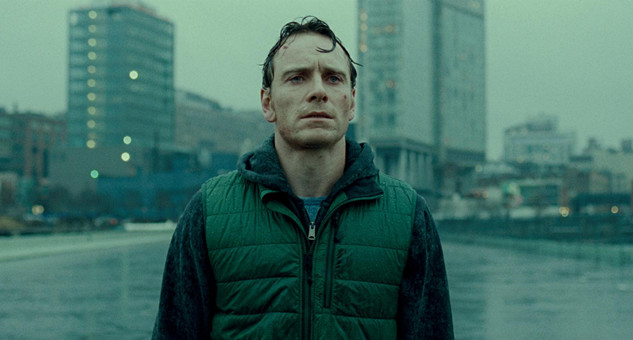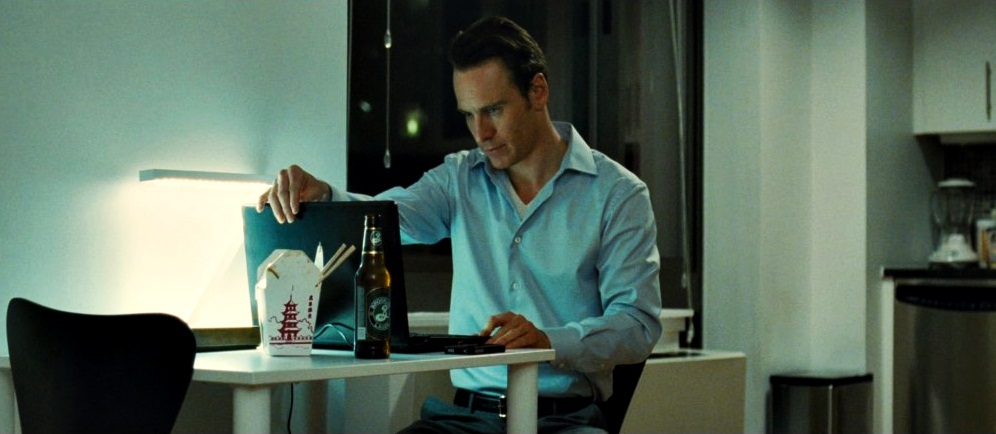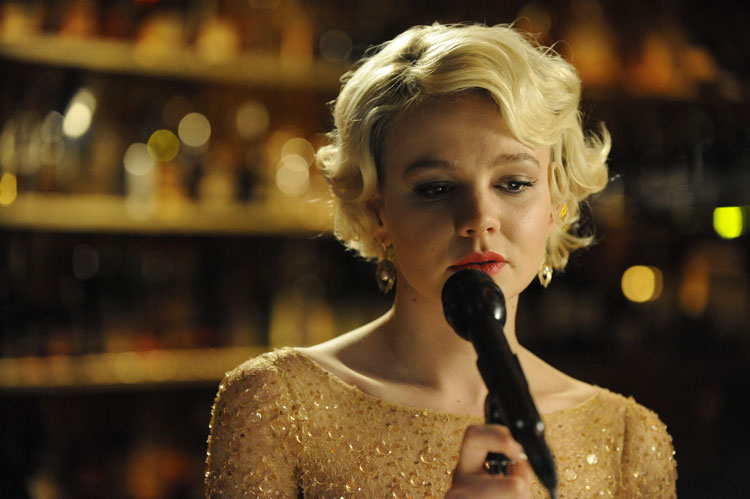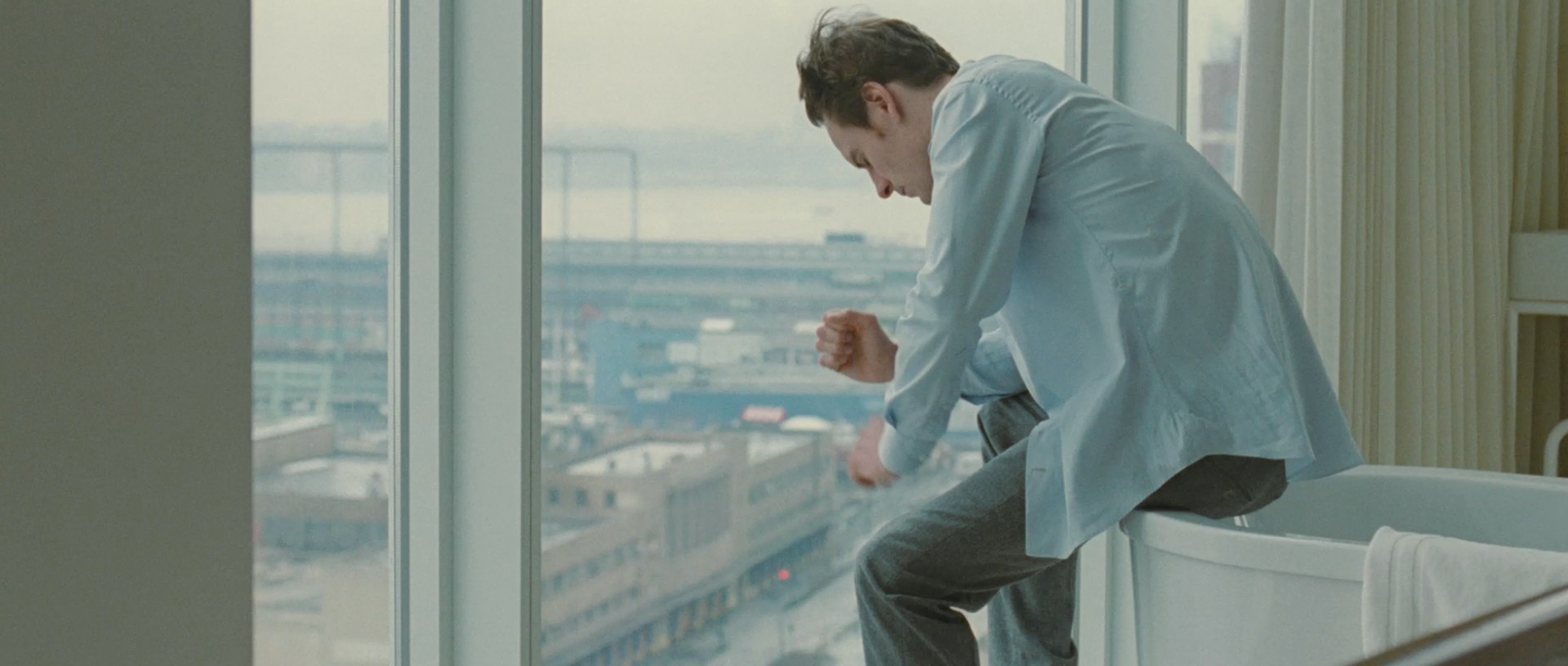
Steve McQueen’s “Shame” is a film one can rarely encounter. The director is also a visual artist, which obviously has an immense impact on his visual and narrative style. “Shame” is his second film, following his debut film “Hunger” which doesn’t shy away from showing the brutality and violence inflicted upon an individual, in a way that is straightforward but impartial. “Shame”, on the other hand, presents us a narrative of destructiveness the individual suffers due to his own acts and that very self-destructiveness is rooted in the condition the main character is in.
The film deals with sexual addiction intertwining this subject with its effects on family bonds, the character’s relationship to his environment, and himself. It poses questions about the nature of relationships in contemporary times in general, and even questions the time we live in in general terms. It presents all of this without shame, completely strips the individual to his bare essence, twists it into something almost unrecognizable yet oddly familiar.
McQueen shows us the individual stripped down to his most basic needs and instincts, helpless but combative. He is aggressive toward his environment, but nervous about himself and almost terrified when confronted with a need to connect with others on any level.
The brilliance of “Shame” is that it portrays all of that sincerely and without masks and false pretenses. McQueen doesn’t try to “sell” us any viewpoints; he just presents the individual as he is, and the final “judgment” rests with the viewer. Yet one may be compelled not to make it, since the complexity of the character and his sufferings is multidimensional and tends to “evade” facile conclusions.
1. Michael Fassbender’s unvarnished performance

After Marlon Brando was done with filming “Last Tango In Paris”, he said that the whole experience made him feel raped. In a scene, Brando tells a story of his childhood which was deeply personal to him; Brandon, on a date with Marianne, tells her that he is from Ireland, the same country Fassbender is from.
Fassbender’s role is no less demanding: to present a character stripped down to the core, his instincts and primordial desires, suffering and despair, he has to lay himself bare – and he completely succeeds. The film starts with Brandon lying naked on a bed, presumably waking up; it is a position in which one is vulnerable. The next scene shows him in a bathroom with the door open.
The tone of the the film is set from the very beginning; we expect to meet Brandon in his most vulnerable and personal affectations, feelings and desires. We get that and much more; the laying bare of a character in front of the audience is nothing new in cinema, but the performance Fassbender gives takes it on a whole new level; it is acted completely naturally and all masks are falling, leaving nothing hidden from the viewer.
2. Unrestrained sexual desire and suffering

In his work, Arthur Schopenhauer came to the conclusion that emotional, physical and sexual desires cause suffering and can never be fulfilled. Suffering is our “positive” state from which we escape only momentarily, only to be caught again into the circle of desire and suffering. This notion cannot be more true for Brandon, since he suffers without sex and as soon as his desires are fulfilled. He cannot escape this circle of suffering he is cast into, he can only live by its malicious laws.
For Brandon, there is no prospect of liberation from his sufferings, since he denies the possibility of commitment, as the dialogue over a dinner table strongly implies. The everlasting ravaging desire and the need to try to fulfill it reminds of Dante’s “Inferno”; with each step Brandon is falling deeper and deeper into the never-ending torture, although he’s trying to escape it by throwing away his laptop and pornography.
The scene in which he has sex with two women shows his intensified suffering and almost a lack of pleasure; this scene can be juxtaposed to the beaten face of Bobby Sands in “Hunger”, also played by Fassbender. Both of them, for completely different reasons, suffer the same despair and anguish. Suffering inflicted upon ourselves as a result of unsatisfied desires can be even more cruel than the suffering others inflict; our drives and urges, as Schopenhauer thought, are the main reason for our misfortune and constant anguish.
3. The music

The music in the film is rather timid, but in the most important and dramatic moments it enhances the feeling of anticipation and a sense that what we are about to see leads to more suffering from the main character and he can hardly escape it. The constant ticking while the music plays enhances the feeling of anticipation and uneasiness. The music was made by Henry Escott; the low strings create a somber and almost solemn atmosphere.
His music plays while Brandon is on a train and is observing a woman across him, while she is smiling, obviously aroused as well.
The music makes us feel the tension which is almost overwhelming. Brandon is listening to Glenn Gould’s piano music on the earphones, searching for calmness and composure in music which he cannot find in his daily life. This calmness is much needed as a brief relief after observing a tortured character.
Blondie’s “Rapture” plays in the club where an atmosphere of easiness prevails, contrasted to Brandon’s uneasiness. In a very emotional scene, in which Brandon himself drops a tear, his sister is singing Frank Sinatra’s “New York, New York”; she appears vulnerable and shy and her performance is beautiful and straightforward in its sensitivity.
4. A study in loneliness

Brandon is alone, as his sister reminds him: “You don’t have anybody.” He engages in sexual encounters with prostitutes or women he meets, but he is utterly and completely alone. His reservation in the company of other people and his nervous laughter on a date show that he is not accustomed to sharing his experience; he cannot do that since his condition is not socially acceptable.
His loneliness is not only grounded in the condition he is in, but also in his need to be self-dependent; he gets a “chance” to make a connection with Marianne, but when they are about to have sex, he escapes commitment and has sex with another woman with whom he is not connected at all. When his sister enters his life, there is a shortage of laughter and meaningful conversations; all he is trying to do is to keep her as far away from him as possible. Being alone is his “modus vivendi”, the one he does not wish, or cannot overcome.